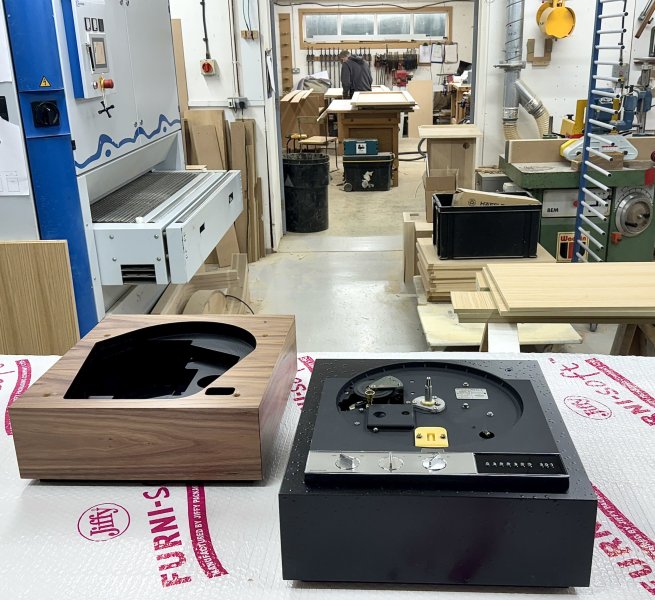Okay please don't just tease us with an image, otherwise people like me are going to ask about the aerated dimple look?
No assumptions.
HOW does the Belgrave sound?
Different finish or different substrate?
Same core materials as before, triple-veneered and taken through a multi-stage finish. Each one comes out differently.
A few notes before we get to sound:
These plinths come in at about 17.5kg. Mass on its own stores energy releasing it slowly, which can blur things at both ends of the spectrum. This is where the specific bamboo used shows improvement. Its stiffness, intrinsic damping and mass give it an advantage over birch ply, slate, or most tonewoods when it comes to controlling resonance.

The internal cut-outs are where things get a little more interesting. Each layer has breaks allowing energy to dissipate quickly. The armboard being mounted into both the top and side also helps—shortens the effective cantilever and resists yaw and torsion.
In terms of sound: The Belgrave or Grosvenor (Walnut) are faster (dynamic) than the usual “high-mass” slate or layered ply approach. More detail across the range, greater separation, additional air, but with guts!. The intention with these plinths is to keep the Garrard’s energy manageable without shutting sound down or stiffing it.
Apologies for the short clip / non optimal music:
401's should be able to roar when needed and drop to a whisper effortlessly. Traditional high mass or resin composites often favour one end of that scale at the expense of the other. If mass were the answer alone a lead plinth would be the way to go. We tried that once, it was really disappointing. Similarly with POM-C and other resins, sure they are inert but the sound becomes lifeless (Not quite sterile but heading that way)